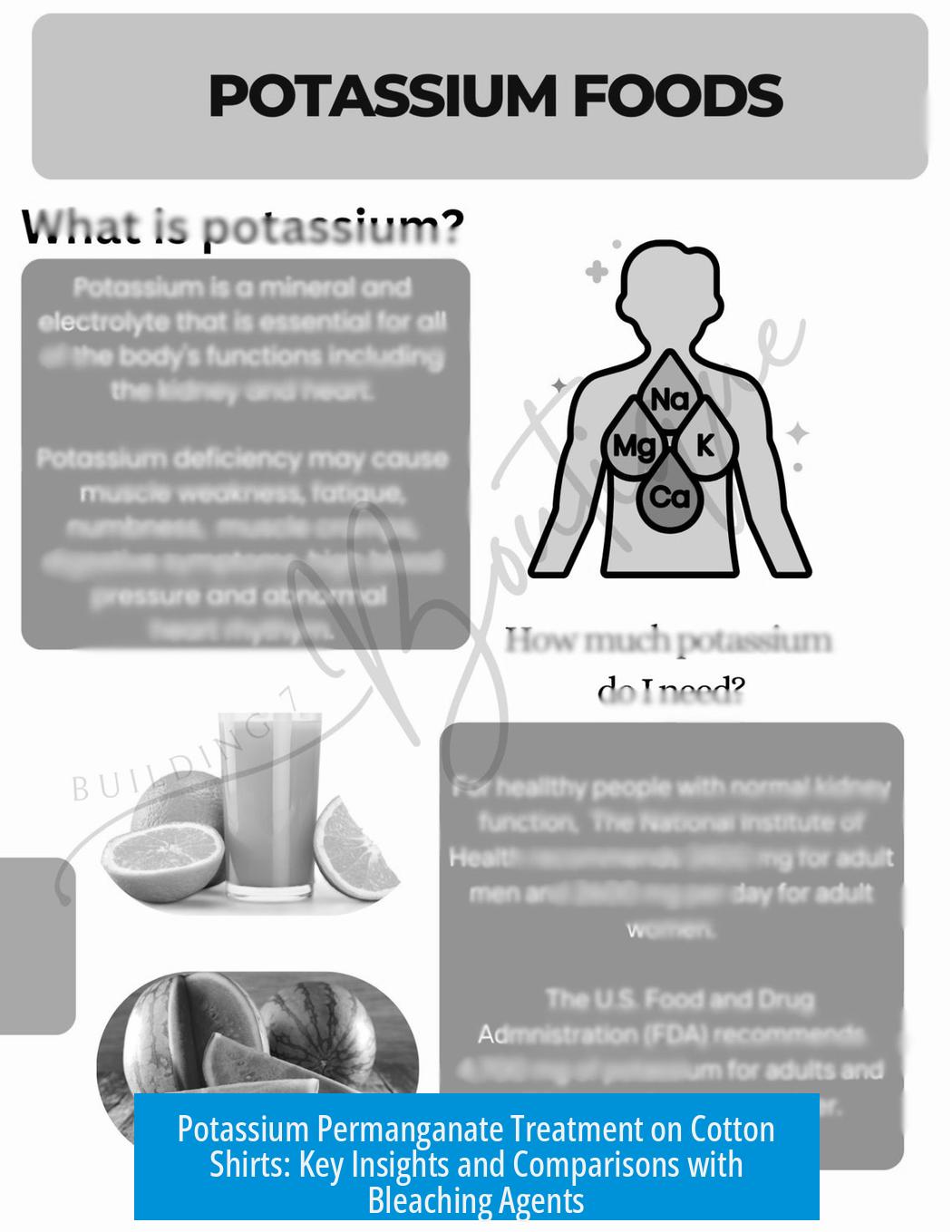Potassium Permanganate on Cotton Shirt for Desired Effect

Using potassium permanganate (KMnO4) on a 100% cotton shirt produces a distinctive white fade, especially on sulphur-dyed fabrics. This chemical reacts differently based on fabric and dye type, requiring careful handling, neutralization, and post-treatment to achieve the desired visual effect without damage.
Interaction of Potassium Permanganate with Cotton
Potassium permanganate acts as a strong oxidizer. On pure cotton, it typically bleaches the fabric by breaking down dye molecules, producing a white or faded pattern. Blended fabrics with synthetic fibers such as polyester respond differently; they may not fade uniformly because polyester resists oxidation by KMnO4.
The type of dye used on the fabric greatly influences the fading color:
- Sulphur-dyed cotton: Yields white fade marks where KMnO4 is applied.
- Reactive-dyed cotton: Produces orange or reddish hues in faded areas.
This variation arises because sulphur dyes and reactive dyes differ in chemical structure and oxidation pathways. Textile designers often choose KMnO4 to intentionally create white patterns on sulphur-dyed black or dark cotton shirts.
Chemical Byproducts and Residue
The oxidation reaction converts KMnO4 to manganese dioxide (MnO2), which appears as a dark brown or black solid. In dilute solutions, fine MnO2 particles may look orange. This residue can leave brown or orange stains on the fabric or surrounding surfaces if not properly handled.
For example, laboratory thin-layer chromatography (TLC) plates exposed to KMnO4 often develop brown discoloration due to this manganese species.
Neutralization Is Essential After Treatment
Neutralizing residual KMnO4 is critical to prevent unwanted staining and further fabric damage. The recommended method involves soaking the treated shirt in a bath containing sodium metabisulfite:
- Add about 4-6 tablespoons of sodium metabisulfite per half tub of water.
- Soak the cotton shirt for 10 minutes.
- Rinse with clean water repeatedly until rinse water runs clear.
- Wash gently with mild detergent and fabric softener.
- Allow the shirt to air dry.
Neutralization converts remaining KMnO4 into a colorless manganese ion, stopping oxidation and removing stained residues. Wearing protective gloves and a mask during application and neutralization preserves user safety.
Comparisons with Other Bleaching Agents
Potassium permanganate differs from bleach agents like sodium hypochlorite. Chlorine bleach often leaves yellow-orange hues due to its acidic nature.
In contrast:
- Potassium permanganate: Used in a 2% solution in denim industry for controlled crease fades, maintains darker tones and provides distinctive white spotting.
- Soda ash (alkaline wash): Gives cooler, balanced fades but acts slower and can damage fabric fiber strength over time.
- Sodium hypochlorite (bleach): Converts dye to yellow-orange shades but acts quickly and is common for household whitening.
KMnO4 offers an alternative for designers needing precise fading control, particularly on cotton with sulphur dyes.
Managing Stains and Dye Complexities
Black fabrics often use multiple dye types. Some dyes resist oxidation, causing uneven fading or unexpected coloration such as black spots after treatment. This explains difficulty in achieving uniform fades on some black cotton shirts.
If KMnO4 stains occur on fabric or denim, thorough neutralization followed by washing helps remove stains effectively. If stains persist, additional treatment with sodium metabisulfite or mild scrubbing may help.
Key Takeaways
- Potassium permanganate produces white fading on 100% cotton, especially sulphur-dyed fabrics.
- Dye type governs fading color: sulphur dyes fade white, reactive dyes fade orange/red.
- KMnO4 oxidation leaves manganese dioxide residue, which can cause brown/orange stains if not neutralized.
- Neutralize treated fabric promptly using sodium metabisulfite; rinse thoroughly and wash gently.
- Potassium permanganate offers controlled fading superior to some bleaches, popular in textile design.
- Multiple dyes in black fabrics may cause uneven or resistant fading patterns.
- Protective gloves and masks are necessary when handling KMnO4 to avoid health risks.





Leave a Comment